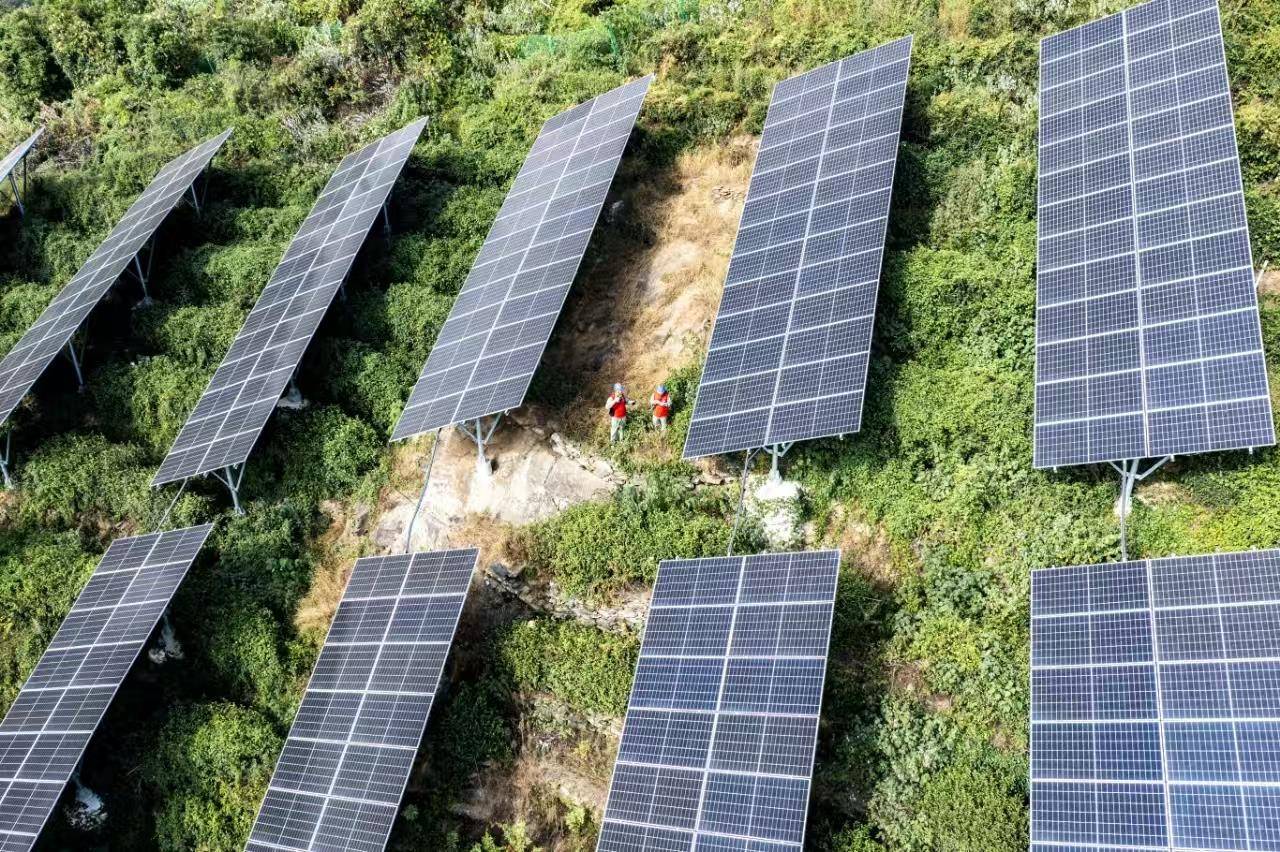Bright sunshine brings not only heat but also “heaven-sent green electricity.” This summer, the 3.62-megawatt distributed photovoltaic power generation system at Hubei Vision Lithium Battery Co., Ltd. has been put to great use. The company’s management calculated that in July alone, it generated over 400,000 kilowatt-hours of electricity, saving approximately 30,000 yuan in electricity costs. Since the beginning of this year, numerous enterprises and residents have installed “photovoltaic caps” on their rooftops. Out of the 8.0272 million kilowatts of newly added photovoltaic capacity in the province, 7.3046 million kilowatts come from distributed photovoltaics.
State Grid Hubei Electric Power data shows that Hubei’s energy structure has undergone a historic shift. New energy installations now account for over 40% of the total capacity, with photovoltaic installations surpassing those of the former leader, thermal power, for the first time becoming the largest power source under provincial dispatch.
Xiehe Wind-Solar-Storage Integrated Power Field in Huangji Town, Xiangzhou District, Xiangyang
As of the end of July this year, the province’s total installed power capacity reached approximately 133 million kilowatts, with thermal power accounting for 31.02%, hydropower for 28.69%, and new energy for 40.29%. Among new energy sources, photovoltaic installations totaled 43.1268 million kilowatts, representing 32.45% of the province’s total capacity.
The increasing “green share” of electricity reflects a more diverse and robust energy support system. Hubei has long suffered from a shortage of coal, natural gas, and oil. In 1986, the province faced an electricity shortfall of 2 billion kilowatt-hours, forcing many factories, including Wuhan Iron and Steel, to ration power for residential use. Over the past 40 years, the successive construction of large thermal and hydropower projects has gradually alleviated Hubei’s power shortages. Today, Hubei has established a multi-driven power supply system incorporating wind, solar, hydro, and thermal power, achieving years of uninterrupted power supply without blackouts or restrictions.
The role of green electricity in regional development is growing. At the end of 2019, new energy installations accounted for about 11% of Hubei’s total capacity, meaning one out of every ten kilowatt-hours consumed came from new energy sources. Today, one out of every four kilowatt-hours consumed in Hubei comes from new energy, with “green” gradually becoming the foundation of development. In cities like Xiangyang, Huanggang, and Suizhou, green electricity installations already make up the majority of local total capacity.
The cost-saving and carbon-reduction effects of “photovoltaic caps” are becoming evident. Hubei Vision Lithium Battery Co., Ltd.’s distributed system generates 3.4 million kilowatt-hours annually, saving over 300,000 yuan in electricity costs. The distributed photovoltaic system on Wuhan Iron and Steel’s rooftops generates 45 million kilowatt-hours per year, reducing carbon emissions by 35,400 tons annually, making it the largest industrial user of green electricity in Hubei.
Improvements in technology and market mechanisms have significantly enhanced the stability of new energy power generation. Hubei’s new energy dispatch system uses cloud computing technology to automatically generate optimal control strategies, achieving integrated coordination of “source-grid-load-storage” and ensuring green electricity reaches households smoothly. Energy storage facilities act like large “power banks,” storing electricity during peak photovoltaic generation at noon and releasing it during evening peak demand hours, stabilizing fluctuations in new energy generation. The efficiently operating electricity spot market encourages users to consume more during low-price periods and shift usage away from high-price peak times. Hubei’s photovoltaic absorption rate during midday peak hours remains consistently above 97%.




